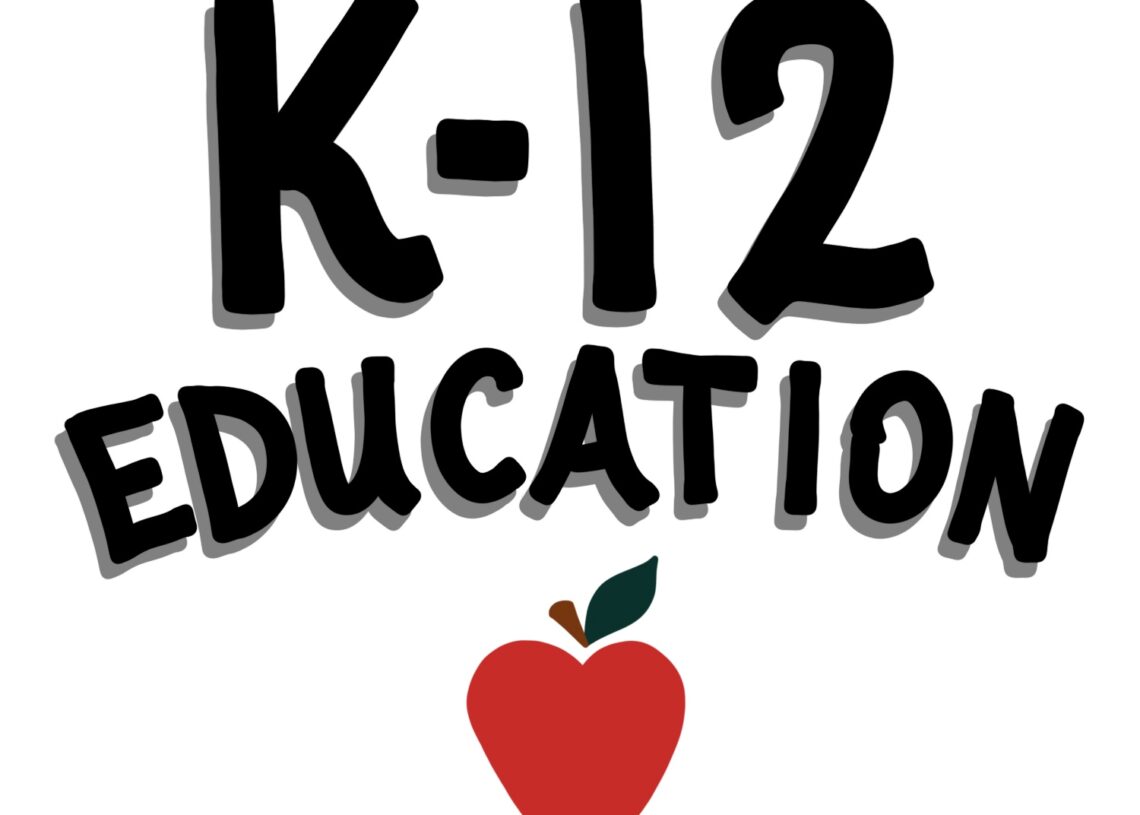Empowering Students with Foundational Skills for the Future
In today’s fast-paced world, equipping students with crucial skills is more important than ever. Educators are increasingly focused on developing what are often called the “4Cs”: critical thinking, communication, collaboration, and creativity. These skills are seen as essential for students to succeed both academically and in their future careers. Integrating these competencies into K-12 education prepares students to be adaptable, innovative, and effective problem-solvers in a constantly evolving world.
Critical thinking empowers students to analyze information and solve problems effectively. Communication skills enable them to express themselves clearly and persuasively. Collaboration encourages teamwork and the ability to work towards shared goals. And creativity fosters innovation and original thinking. When combined, these skills provide a solid foundation for success in all aspects of life.
Research even demonstrates a direct link between these skills and academic performance. Studies suggest that strong communication skills, in particular, have a positive impact on a student’s grades and overall academic achievements. This highlights the importance of thoughtfully integrating the “4Cs” into educational practices.
To effectively cultivate these core competencies, schools must create a supportive and stimulating learning environment. This includes providing teachers with the training and resources they need to foster critical thinking, communication, collaboration, and creativity in their students. By implementing systematic approaches and encouraging these skills across the curriculum, schools can empower students to become lifelong learners and successful contributors to society. Beyond the “4Cs,” a holistic approach also emphasizes self-awareness, self-directed learning, and reflection, all of which contribute to the comprehensive development of lifelong learners, preparing students not just for exams, but for continuous growth and adaptation throughout their lives.
Transforming Education Through Innovative Curriculum Design
The K-12 education landscape is constantly changing, and curriculum innovation is essential to meeting the needs of today’s students. Educators are tasked with blending traditional teaching methods with forward-thinking strategies to create engaging and relevant learning experiences. This evolution includes the rise of alternative education models, the integration of digital resources, and a focus on culturally responsive teaching practices.
Alternative education models, such as homeschooling, are gaining popularity as families seek more personalized and flexible learning options. In fact, homeschooling saw a substantial increase in enrollment, with a 51% growth rate. This trend, along with the rise of virtual learning, is prompting school districts to rethink their curriculum design and offer more adaptable educational approaches. Data from MGT Consulting Group indicates the growth in homeschooling and virtual learning.
| Trend/Category | Data Point | Unit/Description |
|---|---|---|
| Growth in Homeschooling | 51% increase | Percent growth in student enrollment |
| Number of Homeschooled Students (2022) | 4.3 million | Students |
| Number of Homeschooled Students (2019) | 2.5 million | Students |
| Virtual School Provider Revenue Growth during Pandemic | ~25% increase | Percent revenue growth |
Data source: MGT Consulting Group “Top 5 K-12 Enrollment Trends for 2025” April,2025
Curriculum innovation also involves integrating digital resources to enhance learning experiences and expanding the focus to include culturally responsive teaching practices and inclusive special education services. These efforts aim to address the diverse needs of the student population and create a more equitable and engaging learning environment for all students.
Ultimately, curriculum innovation aims to equip students with the skills they need to thrive in a rapidly changing world. This includes fostering adaptability, promoting global citizenship, and ensuring readiness for future challenges. The goal is to provide a holistic education that prepares students for lifelong learning and success.
Strengthening the Foundation: The Power of School-Family Partnerships
Building strong connections between schools and families is essential for student success. When schools and families work together, students benefit from a more supportive and enriching learning environment. This collaboration creates a network of support that extends beyond the classroom and contributes to positive outcomes in K-12 education.
Active family involvement plays a crucial role in a child’s academic journey. When parents and caregivers are engaged, students are more likely to attend school regularly and achieve better grades. This collaboration creates a network of support that extends beyond the classroom and contributes to positive outcomes in K-12 education.
Cultivating Effective Learning Habits for Lifelong Success
The journey of learning is a dynamic process, and cultivating effective learning habits is key to student success. Educators are increasingly focused on fostering curiosity and guiding students toward mastery in today’s educational landscape. This includes promoting disciplinary literacy, encouraging self-directed learning, and creating personalized learning pathways.
Student satisfaction with their educational experiences is on the rise. The 2025 Gallup Student Report Card indicates that 71% of students now rate their schools with an A or B, a notable increase from 66% in 2023. This positive trend reflects the impact of schools’ efforts to engage students and develop their skills.
A significant instructional trend involves disciplinary literacy. Educators are actively teaching students how to learn, read, and communicate as experts within specific subjects. This approach integrates literacy and critical thinking skills across the curriculum, promoting deeper engagement and independent learning habits. By teaching students how to think and learn like experts in different fields, educators are empowering them to become lifelong learners and critical thinkers.
Holistic development remains a central theme, encompassing academic, social-emotional, and lifelong learning skills. Educational approaches increasingly emphasize personalized, adaptive learning pathways and greater student agency. These efforts aim to prepare students for both academic success and adaptability in a rapidly changing world. By fostering a love of learning and equipping students with the skills they need to succeed, educators are setting them up for a lifetime of growth and achievement.
Prioritizing Mental Well-being for Holistic Student Development
Understanding the crucial role of mental well-being is essential for fostering a supportive and effective K-12 educational environment. Prioritizing mental health can lead to improved academic outcomes and overall student development. This includes addressing mental health challenges, promoting early intervention, and strengthening school-based support systems.
Mental health issues significantly impact students. Reports indicate that a large percentage of high school students experience persistent feelings of sadness or hopelessness. These challenges can create systemic barriers to student development, including access to care, absenteeism, and family stressors. Addressing these issues requires a comprehensive approach that includes early intervention, trauma-informed teaching methods, and sustained investment in mental health resources.
Experts emphasize early intervention and trauma-informed teaching methods. Strengthening school-based support systems can help address mental health challenges and nurture well-rounded learners. Sustained investment in mental health resources is critical for fostering resilience and holistic growth.
By prioritizing mental health and providing students with the support they need, schools can create a more positive and supportive learning environment that fosters resilience, well-being, and academic success.
Expanding Horizons: The Value of Extracurricular Activities
Extracurricular activities offer K-12 students valuable opportunities for growth beyond academics. These programs are crucial for developing well-rounded individuals who are prepared for future challenges. By participating in extracurriculars, students can develop leadership skills, explore their interests, and build strong relationships with their peers and mentors.
Afterschool programs play a pivotal role in supporting student development. These programs are recognized as essential, particularly in the wake of learning disruptions. By offering academic support and enrichment activities, schools can help students recover and thrive.
A significant percentage of public schools provide afterschool programs, with many focusing on academics and offering students additional support in core subjects. This emphasis on academic enrichment highlights the commitment to student success.
Despite their importance, extracurricular programs face challenges. Staffing shortages and funding constraints limit program capacity, raising concerns about sustainability. Addressing these challenges is crucial to ensure continued access to these valuable opportunities.
Participation in extracurricular activities positively correlates with various student outcomes. These include higher engagement, improved academic performance, greater graduation rates, and enhanced future readiness. These benefits underscore the importance of supporting and expanding extracurricular opportunities.
Experts emphasize the need for reliable funding and investment in staff to maintain enriching opportunities. Policymakers are urged to prioritize stable support for these programs to nurture well-rounded learners. By doing so, they can help students reach their full potential and develop into successful and engaged members of society.
Q&A
Question 1: The article highlights a significant increase in homeschooling. What percentage increase is mentioned, and what factors might contribute to this trend?
Answer: The article notes a 51% increase in homeschooling enrollment. This growth likely stems from a desire for personalized and flexible instruction, a response to perceived shortcomings in traditional schooling, and potentially the increased availability of online learning resources.
Question 2: How does the article demonstrate the importance of school-family collaboration in improving student outcomes, and what specific example is provided?
Answer: The article emphasizes that strong school-family partnerships lead to improved student attendance and academic performance. It cites the example of Prince George County Public Schools, where collaborative efforts resulted in a significant decrease in chronic absenteeism, with some schools showing drops of over 8 percentage points. This demonstrates the positive impact of proactive family engagement.
Question 2: What are some key challenges to maintaining robust extracurricular activities in schools, and why are these programs considered vital for student development?
Answer: Challenges to maintaining extracurricular programs include staffing shortages and funding constraints. Despite these hurdles, extracurriculars are vital because they contribute to well-rounded development, fostering higher engagement, improved academic performance, increased graduation rates, and enhanced future readiness beyond the academic curriculum.







